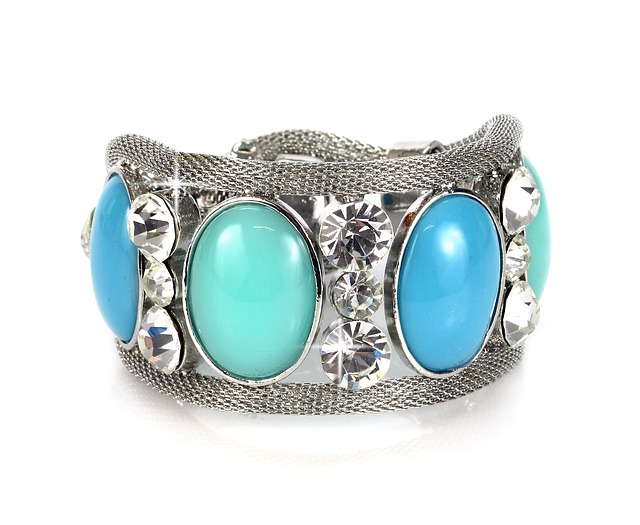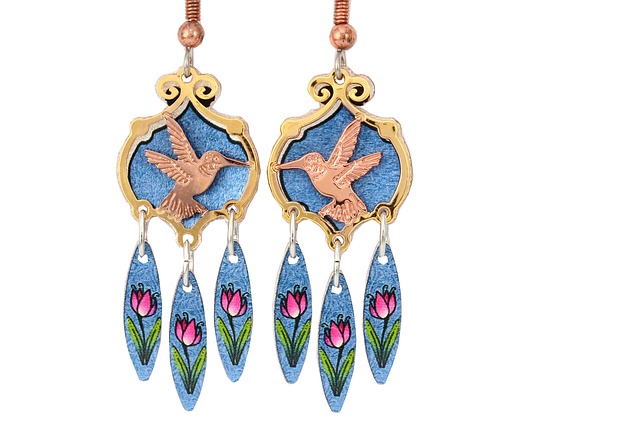
The holidays are upon us which means that many people will be on hunt for one of the most classic holiday gift items: jewellery.
Jewellery designers create, craft or fabricate items of jewellery. They are often goldsmiths, silversmiths, or metalworkers, but can also work with a variety of other materials. Jewellery designers may work with distributors and retail store owners to get their jewellery to consumers or may sell their items directly to buyers in a storefront and on the internet. What follows is an overview on the jewellery design business industry pulled from various sources.
BC

In 2011 there were 2,500 people employed as artisans and craftspersons in BC according to a National Household Survey (NHS). Nearly 1,600 of those artisans and craftspersons were self-employed, 515 of whom worked as jewellers. WorkBC predicts that unemployment rates for jewellers are expected to increase from 6.7% to 7.5% by 2017, before falling to 5.6% by 2022. StatsCan retail trade operating statistics show that average revenues for jewellery, luggage and leather goods stores in 2012 were nearly $317,000.
Canada
According to the Canadian Culture Satellite Account, 2010, craft accounts for $2.8 billion of Canada’s Gross Domestic Product (GDP), where craft is defined as “hand-made artisanal goods from all materials, including textiles, jewellery, pottery, statues, ceramics, furniture, housewares, musical instruments, etc.” The 2011 NHS data estimates that of the 5,300 Canadians working as jewellery makers, 2,700 are self-employed. Small and medium-sized jewellery stores averaged $342,800 in annual revenues in 2011. Data from Canadian Industry Statistics (CIS) shows that in 2011, 80% of jewellery stores were profitable, with small and medium-sized businesses in the industry averaging $342.8 thousand in annual revenues.
Trends and challenges
Job prospects in the arts and crafts industry are strongly related to the health of the tourism industry, which is quite healthy in Canada and BC with tourism spending increasing annually since 1986. As WorkBC's Artisans and Craftsperson Career Profile explains, visitors to British Columbia often purchase art and craft products, including jewellery, as mementos of their time in the province and as gifts for friends and family at home. For a summary of the state of the tourism business, check out our recent Tourism Industry Overview blog post.
Artisans and craftspersons are using the internet as a way to expand their market and reach more customers. They may sell to customers from their own websites or through an online marketplace like Etsy. According to a StatsCan examination of internet shopping, young people are more likely to purchase jewellery online, 37% percent of Canadians under 30 compared with 28% aged 30 to 45. Making the most of multiple marketing options will increase the audience and potential consumer base of a jewellery design business. Another avenue for jewellers to sell their products is at craft and trade shows, such as the Canadian Jewellery Expos. WorkBC suggests that using the internet, trade shows, craft shows, studio sales, etc. in addition to retail stores to sell products will lead to greater success for independent artists.
Researching
Industry associations and trade magazines can be great sources of business intelligence. Directories are way to learn more about existing business and determine your competitive edge.
Associations
- Craft Council of British Columbia (CCBC)
- Canadian Crafts Federation (CCF)

- Canadian Jewellers Association (CJA)
- Metal Arts Guild of Canada (MAG)
- Society of North American Goldsmiths (SNAG)
Magazines
Directories
- Canadian Company Capabilities - Jewellery Stores
- Canadian Jewellers Association Directory
- Better Business Bureau Accredited Business Directory - Jewellers-Retail
- ThomasNet - Jewelry Suppliers
Suggested search terms
jewellery | jewelry | design | watchmaking | goldsmith | metalwork
Additional resources
If you would like to access more resources, the Jewellery Design Business Accelerator Guide was created to help prospective and existing jewellery design business owners gather information for their secondary market research. The guide is broken down into four main sections that cover how to start your research, industry information, competitive information and customer information. Depending on your needs you can spend as much or as little time as necessary in each section.
If you find that you need more guidance before starting your secondary research, check out our Business Research Basics Guide, it will help you focus on what types of information you will need to gather and why it is important.



